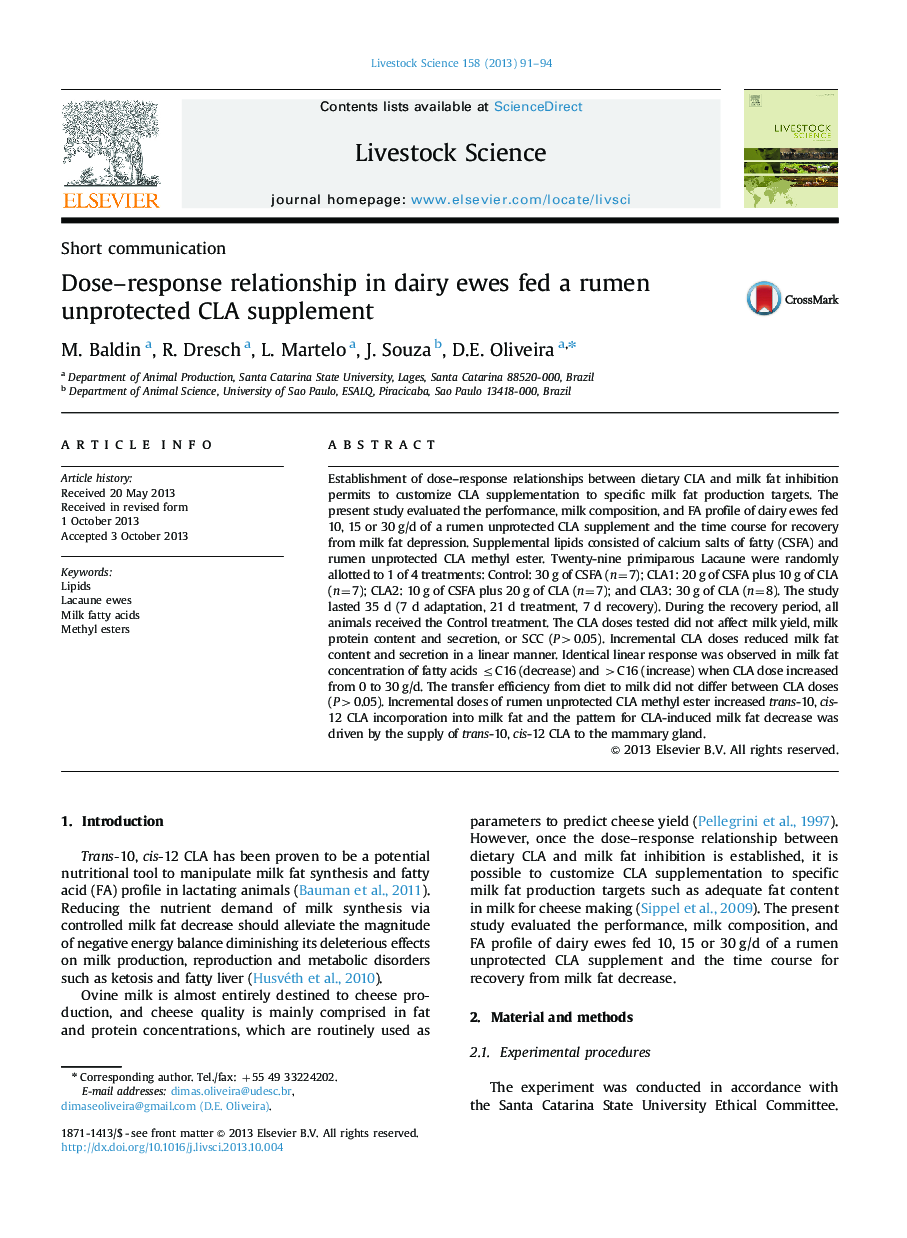| Article ID | Journal | Published Year | Pages | File Type |
|---|---|---|---|---|
| 5790295 | Livestock Science | 2013 | 4 Pages |
Abstract
Establishment of dose-response relationships between dietary CLA and milk fat inhibition permits to customize CLA supplementation to specific milk fat production targets. The present study evaluated the performance, milk composition, and FA profile of dairy ewes fed 10, 15 or 30 g/d of a rumen unprotected CLA supplement and the time course for recovery from milk fat depression. Supplemental lipids consisted of calcium salts of fatty (CSFA) and rumen unprotected CLA methyl ester. Twenty-nine primiparous Lacaune were randomly allotted to 1 of 4 treatments: Control: 30 g of CSFA (n=7); CLA1: 20 g of CSFA plus 10 g of CLA (n=7); CLA2: 10 g of CSFA plus 20 g of CLA (n=7); and CLA3: 30 g of CLA (n=8). The study lasted 35 d (7 d adaptation, 21 d treatment, 7 d recovery). During the recovery period, all animals received the Control treatment. The CLA doses tested did not affect milk yield, milk protein content and secretion, or SCC (P>0.05). Incremental CLA doses reduced milk fat content and secretion in a linear manner. Identical linear response was observed in milk fat concentration of fatty acids â¤C16 (decrease) and >C16 (increase) when CLA dose increased from 0 to 30 g/d. The transfer efficiency from diet to milk did not differ between CLA doses (P>0.05). Incremental doses of rumen unprotected CLA methyl ester increased trans-10, cis-12 CLA incorporation into milk fat and the pattern for CLA-induced milk fat decrease was driven by the supply of trans-10, cis-12 CLA to the mammary gland.
Keywords
Related Topics
Life Sciences
Agricultural and Biological Sciences
Animal Science and Zoology
Authors
M. Baldin, R. Dresch, L. Martelo, J. Souza, D.E. Oliveira,
